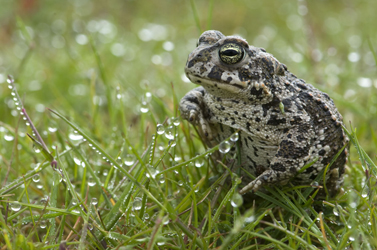One of the critical factors for understanding the establishment, success and potential impact on native species of an introduced species is a thorough knowledge of how these species manage trophic resources. In the present study the objective was to identify the main trophic strategies of the non-native amphibian Discoglossus pictus and its potential trophic impact on the native amphibian Bufo calamita. Authors determine whether D. pictus exploits similar trophic resources to those exploited by the native B. calamita (competition hypothesis) or alternative resources (opportunistic hypothesis). To this end, the stable isotope values of nitrogen and carbon in larvae of both species was analyzed in natural ponds and in controlled laboratory conditions. Results revealed dietary competition; additionally, analyses suggest niche displacement of B. calamita to non-preferred resources and greater competitive capacity of D. pictus in field conditions. Moreover, D. pictus showed a broader niche than the native species in all conditions, indicating increased capacity to exploit the diversity of resources; this may indirectly favor its invasiveness. These results and previous experimental studies indicate that D. pictus competes with B. calamita for trophic resources with potential negative effects on the fitness of the latter. informacion[at]ebd.csic.es San Sebastián et al. (2015) Trophic Strategies of a Non-Native and a Native Amphibian Species in Shared Ponds. PLoS ONE 10(6): e0130549. doi:10.1371/journal.pone.0130549
http://journals.plos.org/plosone/article?id=10.1371/journal.pone.0130549

 Open Call for Research Projects in ICTS-Doñana!
Open Call for Research Projects in ICTS-Doñana!



